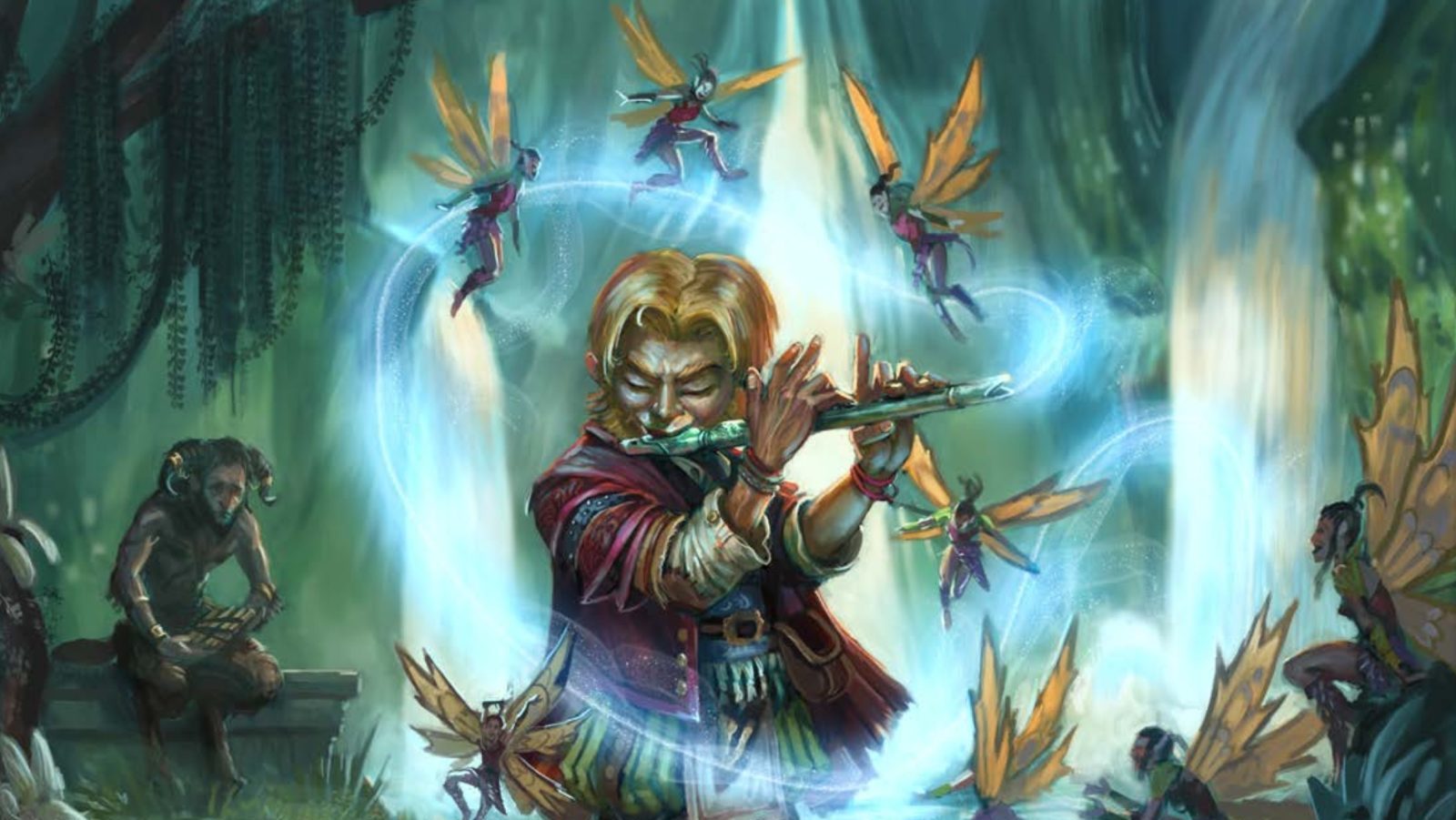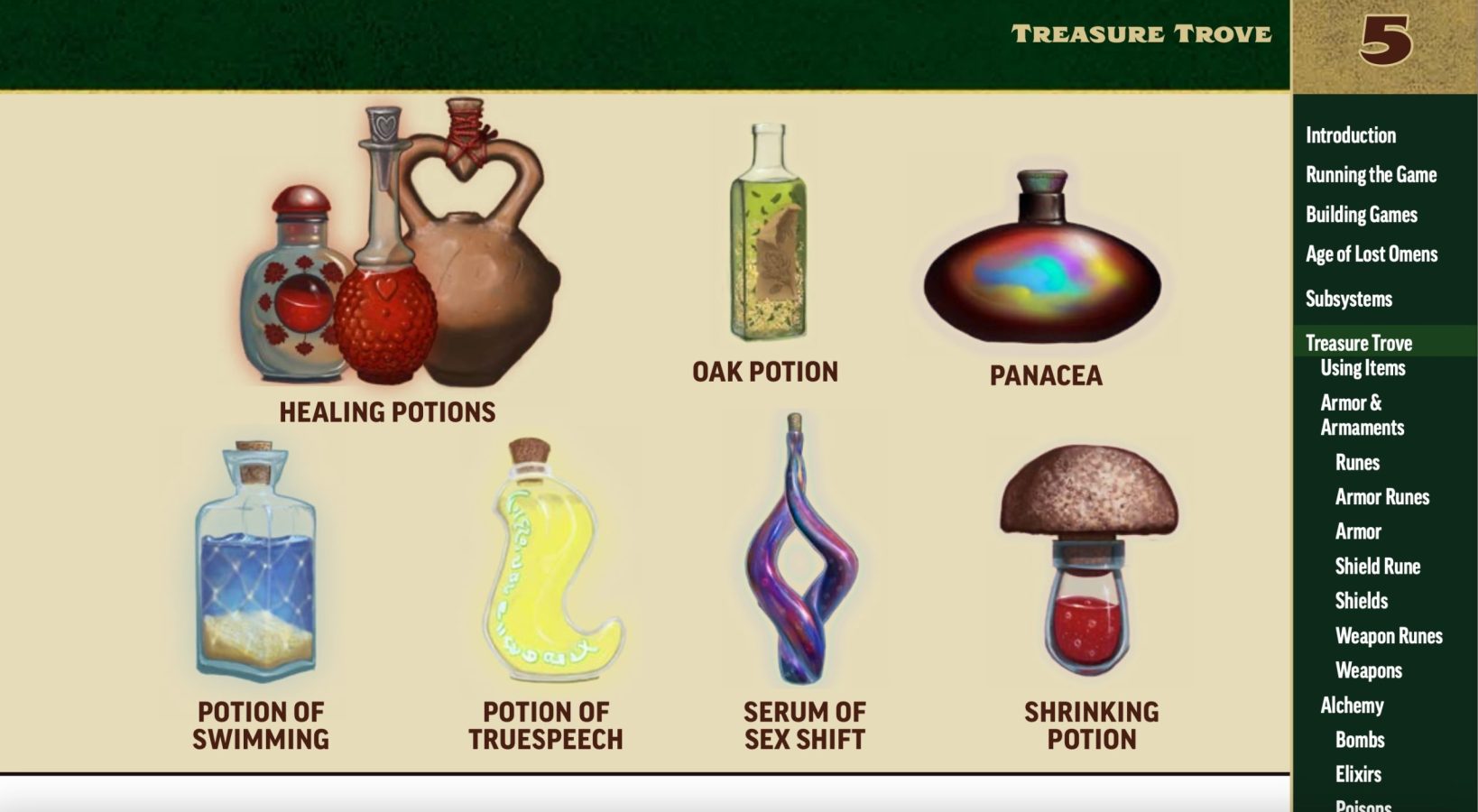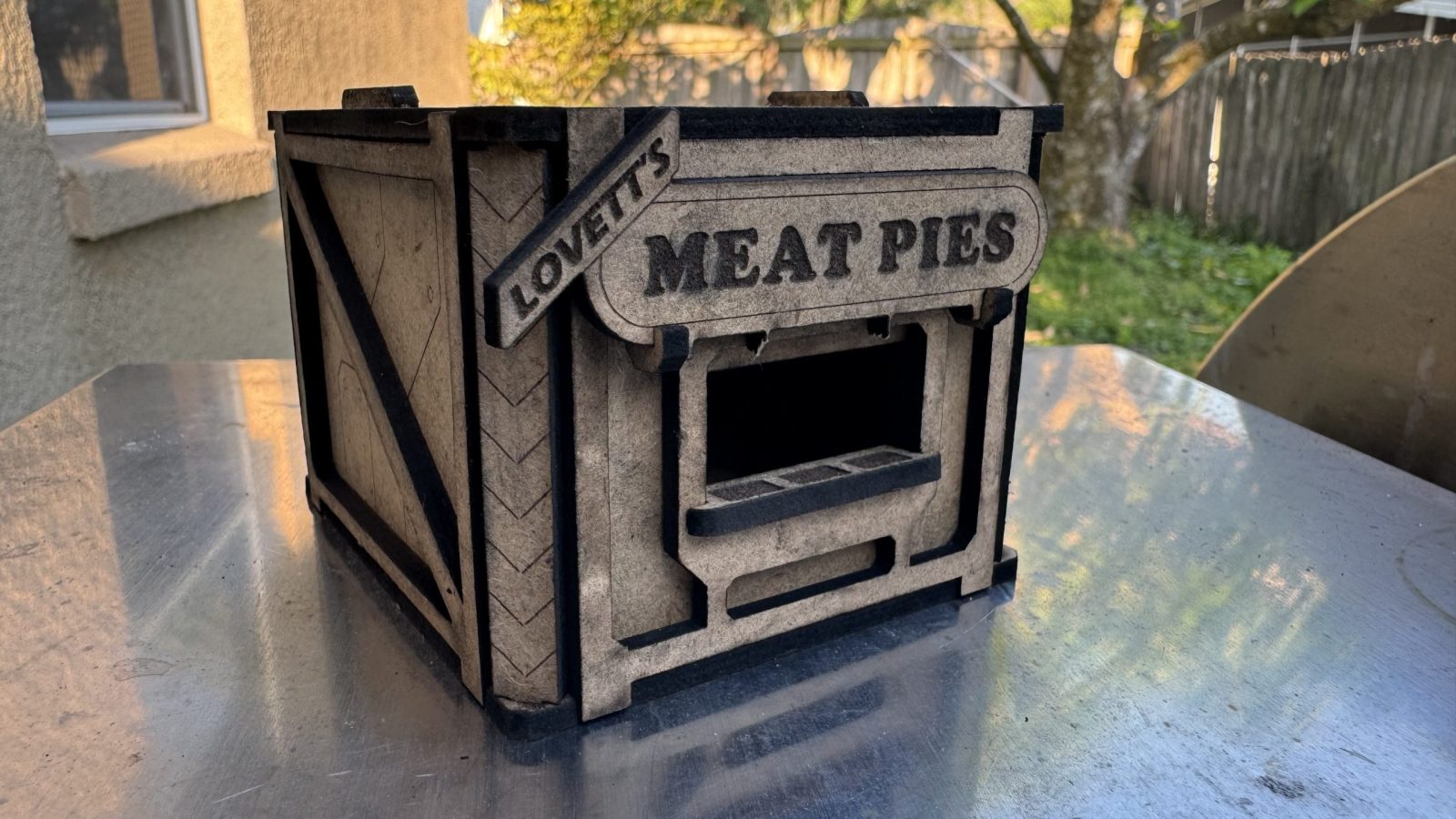The thought of being a game master for a roleplaying group scares me a bit. While I have no problem teaching a board game or acting out the role of a dwarven monk or a space ranger, being in charge of a group and creating a world for them to explore gives me the willies. On numerous occasions, I’ve read about and through new game systems surrounding familiar properties, thinking to myself, I know this world well enough to create a game, but I’ve never been able to pull the trigger. With the Pathfinder 2E Remaster: GM Core and its partner Player Core, I think I may have found the system I could lead players through.

The GM Core, reviewed in this article, is one of several books in the Pathfinder 2E remaster project. The Pathfinder Player Core, reviewed here, outlines the basic rules for character creation and the spells and items used in the system. The upcoming Monster Core will be a compendium of creatures a player may encounter Finally, the Player Core 2 will expand the ancestries, backgrounds, and classes available to players.
As stated in the Player Core review, the remaster is really 2nd edition 2.5 rather than a brand new edition. As the world of role-playing games has evolved, publisher Paizos has taken errata, or updates and changes to rules, released since the 2nd edition release in 2019 and included some new content in the 2023 remaster. From the Paizo website:
“The new core rulebooks will also serve as a new foundation for our publishing partners, transitioning the game away from the Open Game License that caused so much controversy earlier this year to the more stable and reliable Open RPG Creative (ORC) license, which is currently being finalized with the help of hundreds of independent RPG publishers. This transition will result in a few minor modifications to the Pathfinder Second Edition system, notably the removal of alignment and a small number of nostalgic creatures, spells, and magic items exclusive to the OGL.”
Most of the changes in the remaster come in reworked versions of previous releases, while some things have been renamed such as attributes from ability scores or certain spells and skills, others have been eliminated such as some monsters, the alignment system, and schools of magic. Much of this review will focus on the new GM Core product and what it offers, as is.

The GM Core is the next step up from the Player Core and to utilize the GM Core effectively, players really need a copy of each.Throughout the GM Core, there are references to page numbers where more information can be found in the Player Core. Divided into five key sections, the GM Core has everything a player needs to create and/or facilitate a game using the Pathfinder system. The book starts with welcoming the reader and outlining the different sections they might take depending on whether they’re running a published adventure, making something from scratch, a path for brand new game masters, or sections for finding the items needed to add to your current adventure.
The first major section takes GMs through the basics of running a role-playing game, from the way players interact with the story, how to get campaigns up and running, to dealing with problematic situations that may arise in a game. They continue by explaining the ins and outs of how to run the three major phases of the game: encounters, exploration, and downtime.

During encounters, players will be placed in initiative order. On a turn, players will use the Pathfinder three-action economy to attack, maneuvre, and assist their fellow players. The flexibility in combat allows for diverse encounters and a wide variety of different actions players can utilize to take down their enemies. The GM Core talks through running an encounter, the composition of the field, and the construction of enemies the character will face. Exploration is where players discover the world around them as they move through adventure. This section walks GMs through the different activities available to players, how to rest and recover, and how players interact with the hazards they experience on their travels. Downtime allows players to grow their characters and bring depth to their stories. In downtime, players are able to shop for new supplies, learn new skills, take on side jobs to earn money, and rest and recover health.
The Game Building section of the book gives GMs everything they need to build the world they player characters will enter. The beginning of this section helps GMs decide campaign structure, adventure design, and the types of encounters they may design for the world. The rest of the section describes the different variations a GM can use to populate their world from environmental hazards and climate, to structures, to creatures and the complexities of non-player characters, to the items, and how all the different variables build the world at large for the players to discover.

The world of Pathfinder is outlined in section three with the setting taking place in the inner-sea region of Golarion during the Age of Lost Omens. Throughout this section, players learn the background of broken prophecies, magic, and the regions and backgrounds of the people who live in them. Players can see similarities in the different regions and the cultures represented with diversity seen in our planet’s history. Of course, being a fantasy game there are mystical creatures represented as well. I mean, I haven’t seen any catfolk or leshies walking the streets recently. Religion, faiths, philosophies, and factions are also outlined and how they affect the creatures of the world through edicts and anathemas. Edicts are behaviors a faith encourages and anathemas are behaviors considered to be blasphemous. Different nations and religions will focus on the strengths brought by their deities through their work in different planes of existence and even multiple dimensions.
For players looking for something deeper, the GM core outlines numerous subsystems available for inclusion in the game. These subsystems are extensions and allow players to explore topics or adapt to different styles of play. Some of these systems include victory points that can track progress towards an individual or group goal, influence over NPCs, building research challenges on specific topics needed to advance the adventure, and even rules for using vehicles.

The last major section helps GMs populate the world with different types of items players may discover. From armor, weapons, and shields to potions, bombs, and poisons, to magical scrolls, talismans, and gems, the possibilities are endless for a GM. Each subsection describes possible items and how GMs can create or adapt their own items for use in the game. The section ends with a treasure table featuring leveled items, their price, and page number where the item is described. To round out the book, the glossary provides players with some basic information about different topics and includes pages in the GM Core, and the Player Core for some items, for easy reference.
The GM Core for the Pathfinder 2E Remaster project is a fantastic resource for anyone wanting to create and run a game for a group of players. The volume is laid out in a way that a newbie, like myself, and a veteran GM can both find value in their running of a Pathfinder Campaign. For the newer GM, the book provides guidance for running a session with the constantly shifting dynamics brought to the table by the players and tips and tricks on how to handle different situations. For the veteran, in depth details about terrain statistics or the creation of NPC characters, traps, and magical items carefully crafted for their story are provided.

As with the Player Core, the GM Core uses a sidebar system that allows players easy access to find the information they need. When entering a new section of the book, all the sub topics are then listed out on the side with a highlighted section showing the information being discussed on any given page. Combined with the same system in the Player Core, it is easy to find any information needed when running a game session.
For campaign creation, the GM Core offers everything you need to adapt the Pathfinder system to a prewritten story, a newly created world, or your own story within the Age of Lost Omens. The group that I currently play in has adapted the Pathfinder system to the lore and story within another RPG world with ease. Our GM has used the resources in this book to easily adapt creatures to the Pathfinder system and has redesigned encounters to use the three action economy. For those looking to make their own story, the core provides a plethora of ideas for setting

One of the great things about role playing games is the opportunity to meet a wide variety of people. My current GM, Andy Mello, has been playing these games for years, but also just into Pathfinder. He had this to say about the GM Core:
“I think one of the main subjects to touch on in the GM Core are Variant rules systems and the sub systems. Variant rules offer a way to customize the game to suit the needs of the players and GM and it lists the pros and cons of the variant rules. We use the very popular “Free Archetype variant” for example. Subsystems offer a rule set for a clear set of rules within the PF2e system to track reputation, chases and the like.
Lastly, one of the biggest draws to PF2e is the tight math of the system. The chapter on encounter building and balance is one of the most accurate encounter building guides. It allows for the GM to more accurately weigh the difficulty of an encounter. How to create fun and challenging encounters using terrain, and other elements too. The section on treasure is also an effective guide for the GM to award treasure and magic items that are balanced with the character levels.”
My only turn-offs for the book are some of the production errors with the printing on some pages, the lack of a basic adventure, and the need for errata so soon after publishing. On some of the pages in the book, they were almost double-printed making the words look shadowed and bolded. While everything is still legible, reading an entire page in this format left my eyes a little crossed. In many core books, basic adventures for a 1-2 session adventure are included. For newbies like me, I would have appreciated a small adventure to cut my teeth on. Finally, the need for errata. The remaster project took errata from the last few years of the 2nd Edition and worked to make it better. I would think there would be a lot less errata needed for such a new product. Again, these are small and nitpicky, because overall, I’m a fan of this release.
Dan is an educator from Colorado. Growing up as an Air Force dependent gained him lots of new perspectives on the world and a love for making new friends, especially over a good board game. When not at school or playing a board game, Dan is probably at the gym, attending a local sporting event, or performing or attending theater. Dan loves heavy euros, deck builders, living card games, and great solo rules.

For me, this book and the Player Core have awakened a desire to design and run my first ever GM experience. The attention to detail in the book, that could be daunting for a new GM, is handled in such a way that I would not feel overwhelmed diving into my first campaign. On the other hand, the level of detail shows me a glimpse of what could be in my future and the passion that the writers and creators of the product put into this GM Core is one of the reasons why Pathfinder is on the forefront of the RPG space.
PROS
- Designed and curated for the beginner and veteran gamemasters
- Well laid out with a great built in reference system
- Vast array of choices for creating a Pathfinder campaign
CONS
- Errata needed so soon after publishing date
- Some printing errors make pages difficult to read
- No basic adventure included
Unless otherwise stated, the product in this article was provided for review purposes.
See below for our list of partners and affiliates:

 1 month ago
45
1 month ago
45








